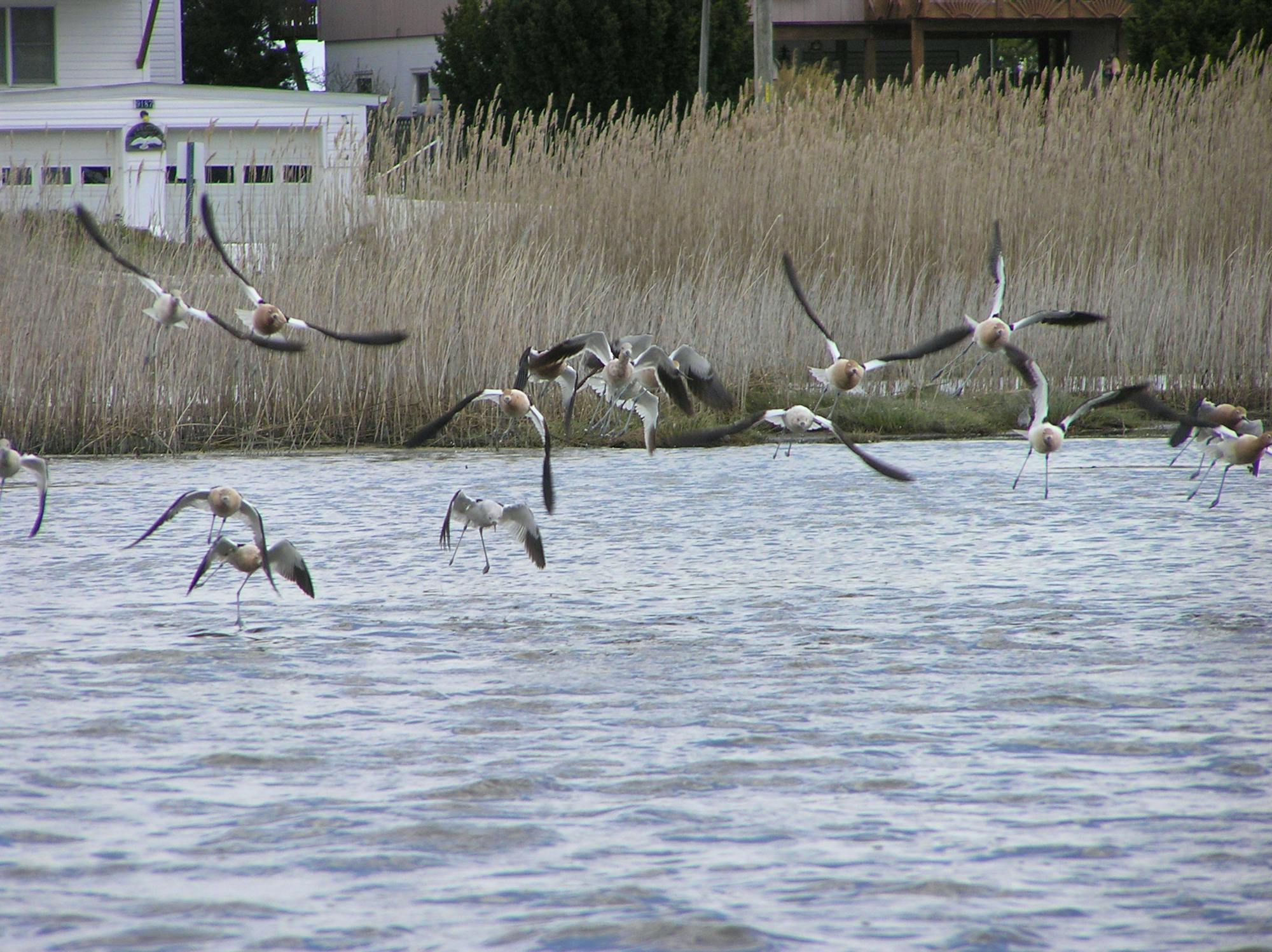
A few years ago the road stretched beyond the guardrail.
The road just ended. Literally. The van we were in pulled right up to the steel highway railing, beyond which lay some crumbled asphalt, a short spit of beach, and the wide open expanse of Delaware Bay. There was no parking lot, no cul-de-sac to turn around; just unfinished road and a steel barrier.
Only a few years ago the end of the road was farther out. So was the sea. And decades ago, the water’s edge was hundreds of yards out, evidenced by an old WWII-era pier, whose remnant pilings jutted way out in the now open water. This coastline was changing, and changing fast.
Our group of conservation organizations and U.S. Fish and Wildlife Service staff spilled out of the van. Standing on the shores of the Prime Hook National Wildlife Refuge, one of the largest protected areas in the state of Delaware, we were on a trip to better understand the issues facing the coastal national wildlife refuges of Delaware and the eastern shore of Virginia. We followed refuge manager Michael Stroeh down the beach, tripping over old stems and roots of marsh grasses and shrubs that poked through the sand as reminders of what was here only a few short years before. It was April, and though the region had experienced the warmest March on record, the wind was biting cold. I cinched the hood of my wind breaker over my head as we stopped our jaunt up the beach.

All aboard the airboat!
Prime Hook is divided into three units, separated by roads that run from the inland to the coast. The roads also serve as dikes. In the 1980s, to make up for lost freshwater wetlands elsewhere, the Fish and Wildlife Service used the dikes to make a wetland impoundment system, managing the water levels to convert the once tidal, saltwater marshes into freshwater marshes – better habitat for migrating ducks, geese, and shorebirds. But once considered an innovative solution, this system now makes the refuge extremely vulnerable to the effects of sea-level rise and increased storm surge.
Taking to the water
We boarded an airboat for the next part of our tour. (If you have never been on an airboat, they are LOUD, even with earplugs and [slightly rusty] external ear protection.) I reminded myself that I was still outside, in nature, at a national wildlife refuge, on the water—rare for a D.C.-based conservationist.
We skipped across the water to the interior of the marsh. We were in the middle of a 4,000 acre wetland that used to be full of emergent vegetation. But where marsh grasses should have surrounded us, it was open water in every direction. The marsh was gone.
“In 2009, a Veteran’s Day Storm created the inlet and brought in the slug of sand and saltwater with its storm surge, killing all of the freshwater vegetation,” explained Susan Guiteras, the refuge’s supervisory biologist. “If we had been able to close the inlet quickly, we may have been able to change the salinity and reestablish the marsh plants. But that would have only been a temporary fix anyway. Once the freshwater plants died, their roots couldn’t hold the marsh muck together, so the peat just washed away, deepening the water to a depth that even saltwater-tolerant plants could not establish.” The habitat had simply washed away.

Prime Hook refuge provides important habitat for migratory birds.
Preparing for the future
The scenario at Prime Hook reflects a broader challenge for refuges in a warming world: as the climate changes, we can no longer count on protected areas delivering the same benefits and habitats they once did. Conservationists need to understand how the impacts in one place affect species and ecosystems over a much larger area, and what can be done to help them adapt to those changes.
Fortunately, the refuge has been working closely with the state of Delaware to strategize about conserving the entire “Bayshore” landscape, planning how to slowly transition the freshwater reservoirs into more resilient saltwater systems to avoid a catastrophic loss from a future storm. Federal and state agencies, conservation groups and other partners are beginning to follow suit, mapping out existing conservation areas, developing shared conservation priorities, and partnering to achieve those priorities across the landscape.
Prime Hook is just one of the first refuges to experience these changes in such a dramatic way. There are over 160 coastal national wildlife refuges across the country. These areas need to begin taking steps to prepare for the changes to come. And with waters inching up along our coasts all the time, there isn’t a moment to waste.
Learn more:
For more information about the impacts of sea-level rise on national wildlife refuges, and recommendations to help them prepare, see Defenders’ recently-released report: National Wildlife Refuges and Sea-Level Rise: Lessons from the Frontlines.



